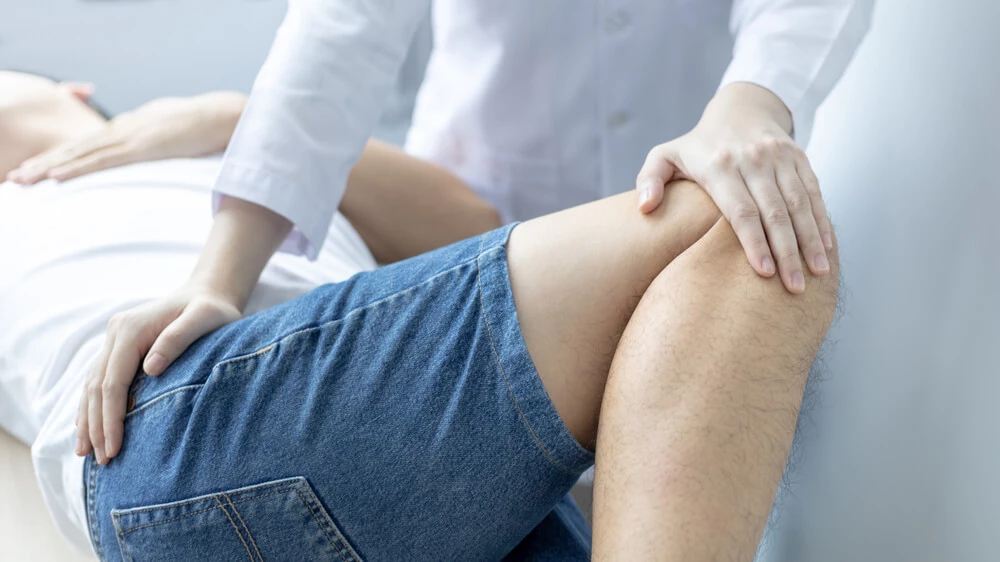If you suffer from elbow pain, you’re not alone. Tennis elbow is a fairly common issue among tennis players or those involved in racquet sports. The good news is that there are several things you can do to help ease the pain and get back to your game.
Elbow Pain
Elbow pain is a common problem that can be caused by various factors. The elbow is a complex joint made up of the bones of the upper arm and forearm, as well as the muscles, tendons, and ligaments that connect them. This gives the elbow a wide range of motion, making it possible to flex and extend the arm, rotate the forearm, and grip objects.
However, this wide range of motion also makes the elbow susceptible to injury. Overuse injuries are common in racket sports as well as in other activities that involve repetitive motions of the elbow joint. These injuries can cause the muscles and tendons around the elbow to become irritated or inflamed, leading to pain and discomfort. Elbow joint pain can also be caused by other issues, such as arthritis, bursitis, or muscle strain.
Elbow joint elbow pain is most often caused by overuse of the elbow joint and the muscles and tendons attached to it. In many cases, the pain is due to inflammation of the tendons that attach the forearm muscles to the elbow joint.
Tennis Elbow Pain
Elbow joint pain is commonly caused by lateral epicondylitis, also known as tennis elbow. This condition results from overuse of the muscles and tendons that attach to the lateral epicondyle, the bony protrusion on the outer side of the elbow. Repeated motions, such as those often used in tennis, can lead to the inflammation and pain of lateral epicondylitis.

Lateral epicondylitis is a form of tendinitis, which is the inflammation of the lateral epicondyle tendon. This condition develops over time with repetitive motions of the elbow joint. Blood circulation in the affected area is reduced, which can lead to scar tissue formation. The scar tissue can limit the elbow’s range of motion and cause further pain.
Medial Epicondylitis
Golfer’s elbow is a similar condition caused by overuse of the muscles and tendons on the inner side of the elbow joint. The medical term for this condition is medial epicondylitis. As with lateral epicondylitis, a golfer’s elbow is the result of repetitive motions that put a strain on the elbow joint.
If you think you may be suffering from lateral epicondylitis or a golfer’s elbow, it’s important to see a doctor or chiropractor for an accurate diagnosis. Once the cause of your elbow pain has been determined, you can begin treatment and start on the road to recovery.
Symptoms of Tennis Elbow
Tennis elbow sufferers commonly complain of pain in the affected arm. This results from inflammation of the tendons in the arm and wrist. Symptoms include pain and tenderness in the affected area, as well as decreased range of motion.
The pain of the tennis elbow is often worse when the arm is used for overhead motions or when gripping objects. You may also feel pain when extending the arm or when twisting the wrist.
How is Tennis Elbow Diagnosed?
Your doctor will ask about your symptoms and medical history. They will also perform a physical exam. Imaging tests, such as an MRI or X-ray, may be ordered to rule out other conditions.
If you think you may be suffering from tennis elbow, it is important to see a doctor or other medical professional for an accurate diagnosis. Early treatment is essential in preventing the condition from becoming worse.
Injury Prevention
There are several different ways to prevent tennis elbow, including:
- protecting the soft tissues around the elbow joint
- avoiding repetitive motions that put stress on the elbow joint
- keeping the muscles and tendons around the elbow strong and flexible
- avoiding contact with a hard surface (such as a bony bump)
A more practical way to do these is to avoid repetitive motions that put a strain on the elbow joint. If you must perform a repetitive motion, take frequent breaks and use proper form. Wearing a compression sleeve can also help to reduce this.
Chiropractic Treatment Plan
Chiropractic management is a key injury prevention strategy for tennis elbow. Chiropractors work to ensure that the muscles, tendons, and ligaments surrounding the elbow joint are functioning properly. This helps to minimize the risk of overuse injuries. Chiropractic care can also help to speed up the healing process if an injury does occur. Chiropractors may use a variety of techniques, such as massage, stretching, and manipulation, to treat tennis elbow. They may also recommend exercises or other activities that can help to prevent the condition from recurring.
If you’re suffering from tennis elbow, it is important to undergo a physical examination for an accurate diagnosis. A chiropractor can also help to identify any underlying issues that may be contributing to your pain.
Conservative Treatment Options
Physical therapy is often recommended as a conservative treatment option for tennis elbow. Physical therapy can help improve the range of motion and strengthen the muscles and tendons around the elbow joint. A physical therapist can also help to develop a plan to prevent future injuries.
Compression sleeves are a common treatment option for tennis elbow. They are worn around the forearm and help to reduce inflammation and pain. Compression sleeves can be purchased over the counter or online.
One of the most effective conservative treatment options for tennis elbow is cross friction massage. This technique involves massaging the area of the tendon that is most commonly damaged in the tennis elbow, known as the extensor carpi radialis brevis (ECRB).
Active release technique (ART) is another popular conservative treatment option for tennis elbow. This technique is similar to cross friction massage but also involves stretching the damaged tendon.
Active release techniques are performed by certified therapists who have completed specific training in this area. The therapist will apply pressure to the affected tendon and then stretch it. This helps to break up any adhesions or scar tissue that may be present and can help to improve the range of motion and reduce pain. Active release techniques are often used in combination with other treatments such as ice and heat therapies, exercises, and stretching.
A recent case report found that Active release techniques were effective in treating tennis elbow in a large percentage of patients. The study found that improved range of motion, pain, and function in patients with tennis elbow. This is an effective treatment option for those who are looking for an alternative to surgery or other more invasive treatments.
Surgery is rarely needed for tennis elbow but may be recommended in severe cases that do not respond to conservative treatment. Surgery involves repairing or removing the damaged tendon.
A chiropractic elbow adjustment can be a great way to get relief from the pain and discomfort associated with the tennis elbow.
Visit the Chiropractic Clinic Today!
If you are experiencing pain or discomfort in your elbow, it is important to consult with a healthcare professional to determine the best course of treatment. If physical therapy is recommended, our team of experienced physical therapists at our chiropractic clinic can help with tennis elbow treatment. At our office, we specialize in helping patients find relief from neck pain and other overuse injuries.
We will work with you to develop a personalized physical therapy plan to help reduce your pain and improve your range of motion. Contact us today to schedule an appointment.







